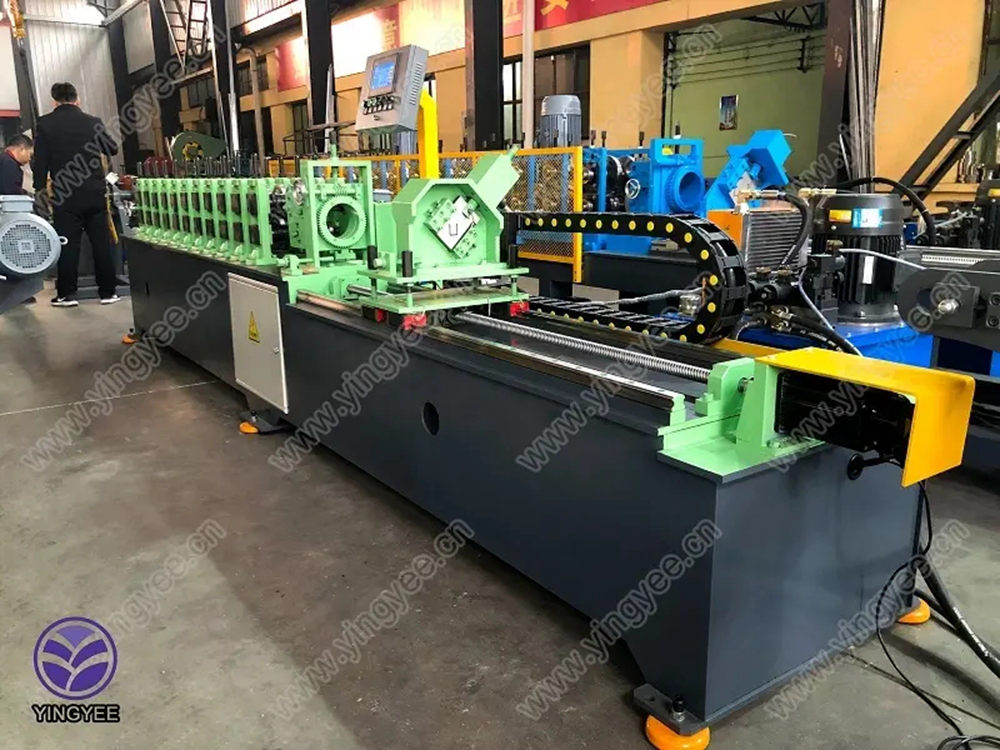
Understanding Double Layer Roofing Sheets Forming Machines
The construction industry continues to evolve, and with it, the machinery and technology used in the production of building materials. One such advancement is the double layer roofing sheets forming machine, which plays a pivotal role in streamlining the manufacturing process of roofing materials. This innovative machine allows for the efficient production of roofing sheets with varied colors and designs, catering to the diversification of architectural styles and client preferences.
What Are Double Layer Roofing Sheets?
Double layer roofing sheets are innovative building materials designed to provide enhanced durability, insulation, and aesthetic appeal. Unlike traditional roofing sheets, double layer systems consist of two distinct layers of metal or other materials, which not only improve strength and longevity but also offer better thermal insulation. These sheets are commonly used in both residential and commercial properties, making them an ideal choice for roofing solutions in various environments.
The Role of Forming Machines
Double layer roofing sheets forming machines are specifically engineered to produce these advanced roofing materials efficiently and with precision. The machines typically consist of a series of rollers, belonging to two separate sets, that shape the raw material into the desired profile. The technology involved allows for the simultaneous formation of two different profiles, thereby increasing productivity and reducing labor costs.
The production process begins with feeding the raw material—usually metal coils—into the forming machine. As the material passes through the rollers, it is progressively shaped into different forms, according to the specifications set by the manufacturer. This process not only ensures uniformity in thickness and width but also enables the incorporation of various designs, allowing businesses to cater to diverse market needs.
Key Features and Benefits
1. Efficiency One of the standout features of double layer roofing sheets forming machines is their ability to produce two profiles simultaneously. This efficiency significantly reduces production time and energy consumption.

2. Versatility These machines can be customized to produce various types of roofing sheets, including corrugated, trapezoidal, and tiled sheets, among others. This versatility allows manufacturers to diversify their product offerings without investing in multiple machines.
3. Quality Control With the integration of advanced technology, modern forming machines are equipped with automated control systems that ensure high precision in production. This results in roofing sheets that meet stringent quality standards, with consistent dimensions and minimal defects.
4. Cost-Effectiveness Although the initial investment in a double layer roofing sheets forming machine may be higher than traditional machines, the long-term savings are substantial. Reduced labor costs, decreased waste, and faster production times contribute to a more economical manufacturing process.
5. Eco-Friendliness Many manufacturers are now adopting sustainable practices in their production processes. Double layer sheets typically require less raw material, and the machines are designed to minimize waste, making them a greener choice for roofing solutions.
Applications
Double layer roofing sheets are widely utilized in various applications, including
- Residential buildings, where homeowners seek aesthetic appeal combined with durability. - Commercial structures such as warehouses and factories that require cost-effective and reliable roofing solutions. - Agricultural buildings, providing protection while facilitating ventilation and heat insulation.
Conclusion
The advent of double layer roofing sheets forming machines represents a significant advancement in the roofing material manufacturing sector. By enhancing efficiency, versatility, and quality control, these machines empower manufacturers to meet the growing demands of the market while optimizing their production processes. As the construction industry continues to embrace technological innovations, the double layer roofing sheets forming machine stands out as a prime example of how machinery can transform and refine the production of essential building materials. Industries looking to modernize their manufacturing processes and cater to evolving consumer needs would do well to consider integrating this technology into their operations.